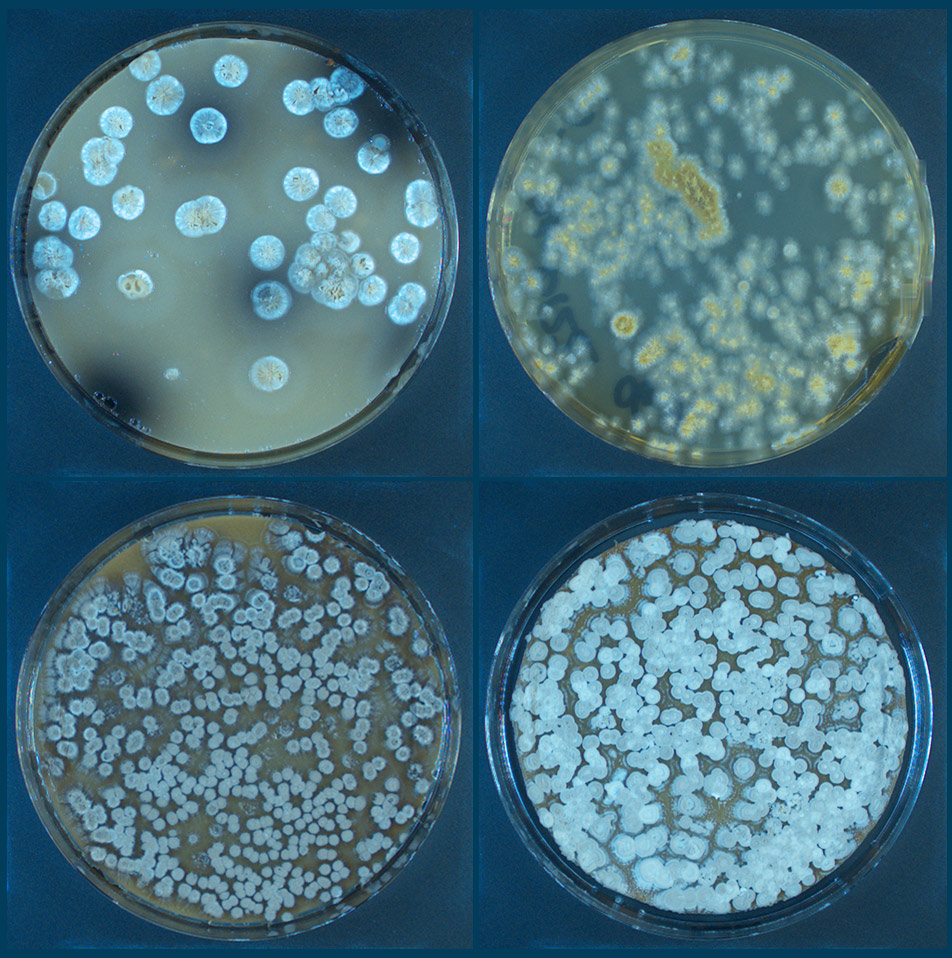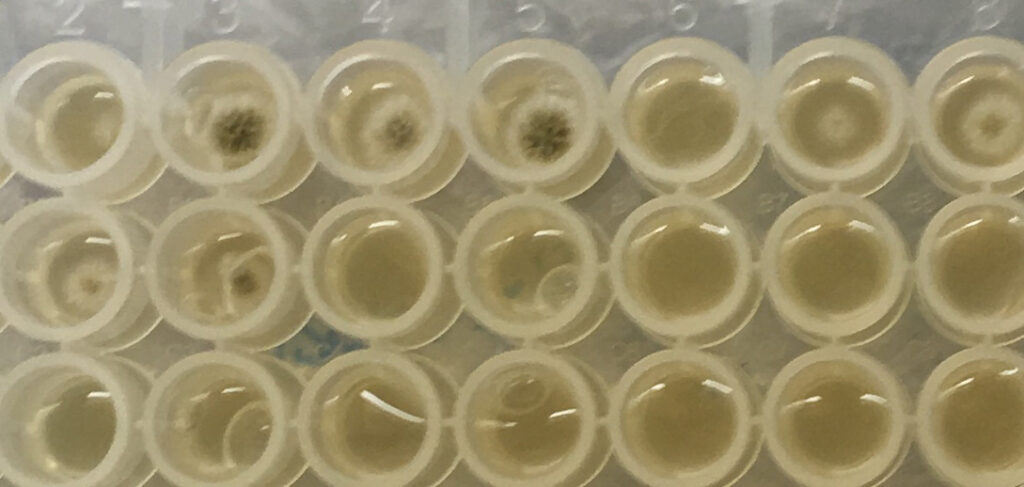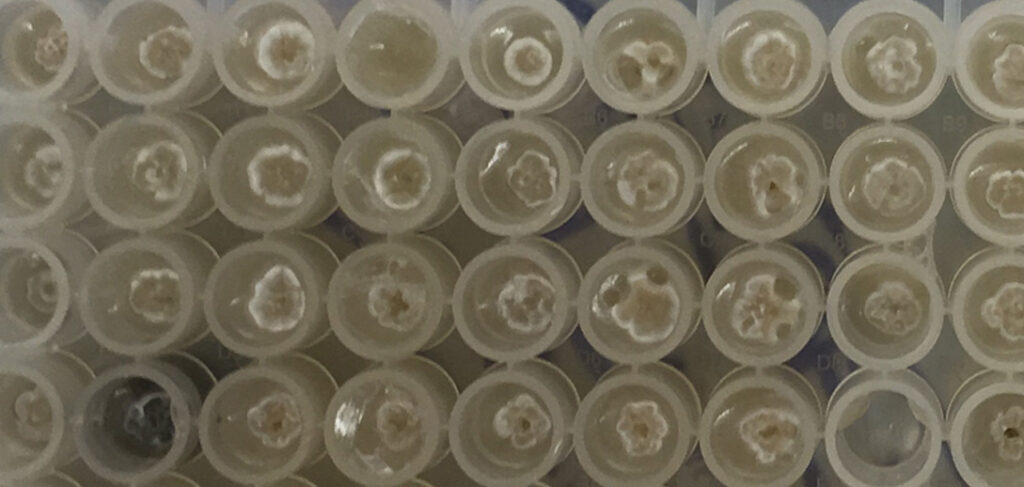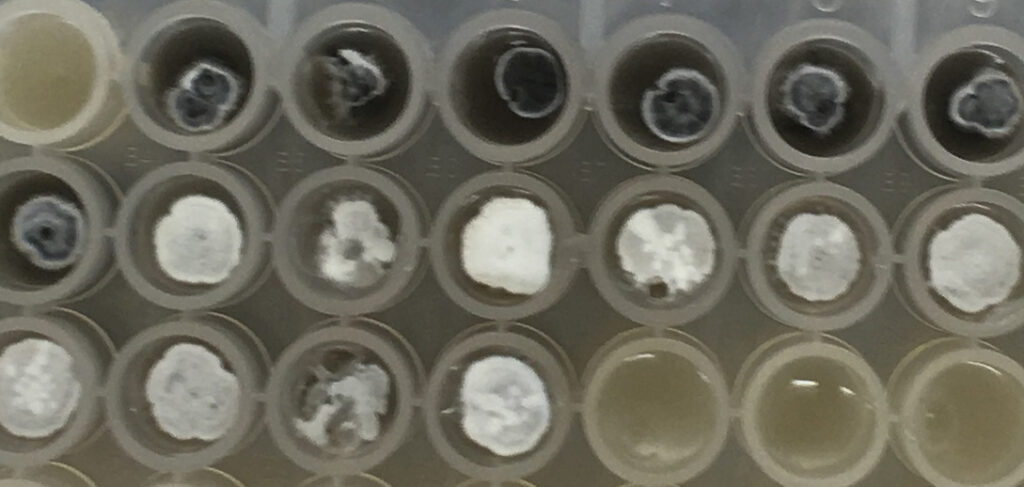High-throughput bioprospecting
Automatic colony picking of non-model fungal and bacterial species
Aim
In 2019, Singer Instruments teamed up with Isomerase, a Cambridge UK-based biological engineering company, to test the effectiveness of PIXL at picking and plating a range of non-model organisms.
This included a filamentous fungus and a range of actinobacteria, selected from among Isomerase’s extensive proprietary collection of more than 20,000 strains.

Figure 1. Collection of Isomerase source plates picked using PIXL.
Introduction
The development of high-throughput screening techniques that support innovators to efficiently exploit a wide variety of microbial resources is a global priority.
PIXL can potentially help to address this bioprospecting challenge by automating some of the culturing and downstream processing necessary for high-throughput experimentation.
However, colony-picking robots can only pick what they can ‘see’. This means that colonies with unusual colours or morphologies can often pose a significant challenge for colony detection algorithms.
To understand PIXL’s full capability the team at Isomerase tried to ‘beat’ PIXL with a range of their most hard-to-pick organisms, some of which they were confident would be near impossible to pick.
Method
Isomerase were particularly interested to understand whether PIXL could pick colonies that exhibited atypical phenotypes.
This included the dark brown filamentous fungus Glarea lozoyensis and a wide range of filamentous bacteria from around the world, including Kitasatospora putterlickiae, Streptomyces avermitilis and Streptomyces venezuelae.
The organisms chosen were not only different colours but also exhibited different colony morphology, from the dry and powdery, to the extremely tenacious.
PIXL has several unique features that can help optimise for transfer efficiency when picking non-model organisms.
This includes a choice of detection algorithms and various mixing profiles that can be adapted to carefully ‘scrape’ the agar in repeat circular movements within a defined radius.
PIXL can also pick a variety of organisms continuously without stopping for wash cycles or to change tips thanks to ‘Pickupline’, which is cleaved after every pick (see ‘How to pick a Picker’).
Results

Glarea lozoyensis

Kitasatospora putterlickiae

Streptomyces avermitilis & streptomyces venezuelae
Figure 2. PIXL successfully picked colonies of different species chosen by Isomerase. The species chosen exhibited a range of morphologies that PIXL was able to detect, pick and re-plate.
PIXL has already been shown to detect and pick model organisms such as S. cerevisiae (yeast), E. coli (gram-negative bacteria) and C. reinhardtii (algae).
Thanks to Isomerase, these latest findings demonstrate that PIXL is further capable of working with non-model organisms that exhibit atypical and challenging phenotypes.
Dr Martin Sim, senior scientist at Isomerase, had this to say about PIXL’s performance:
“I’m happy to say that every strain we picked and replica plated from the solid agar into the 96 well plates grew, and after three weeks in the incubator no plate has shown evidence of contamination.”
This shows that PIXL is both versatile and reliable when it comes to picking different organisms of varying morphologies in parallel.
But what is it like ‘in the field’? Can it handle uneven agar surfaces? Sophisticated can sometimes mean complicated, so is PIXL difficult to work with?
Here’s how Martin and his team found working with PIXL:
“Everyone was very impressed with the machine, especially its ease of use and the friendly software user interface, the polymer picking system. And of course how it was accurately handling uneven agar surfaces and working with our unusual colony morphologies.”
Conclusion
This case study provides evidence for the effectiveness of PIXL at picking and plating non-model organisms. It highlights the role of lab automation in meeting growing global demand for high throughput bioprospecting, towards the development of sustainable, bio-based products and innovations.
Do you need to reliably pick non-model organisms at scale?
PIXL’s pinpoint picking technology is engineered to support a wide range of microorganisms.